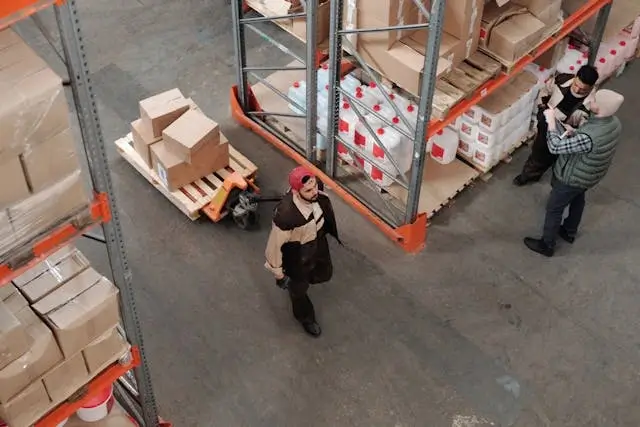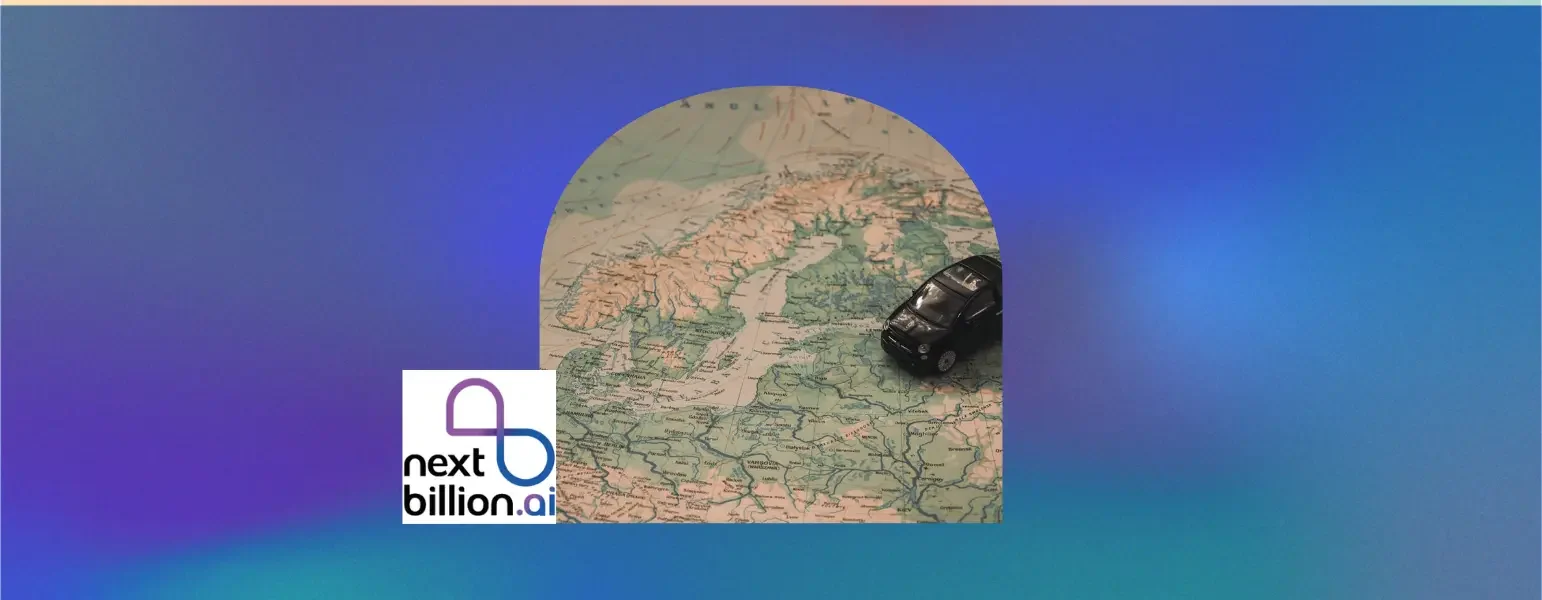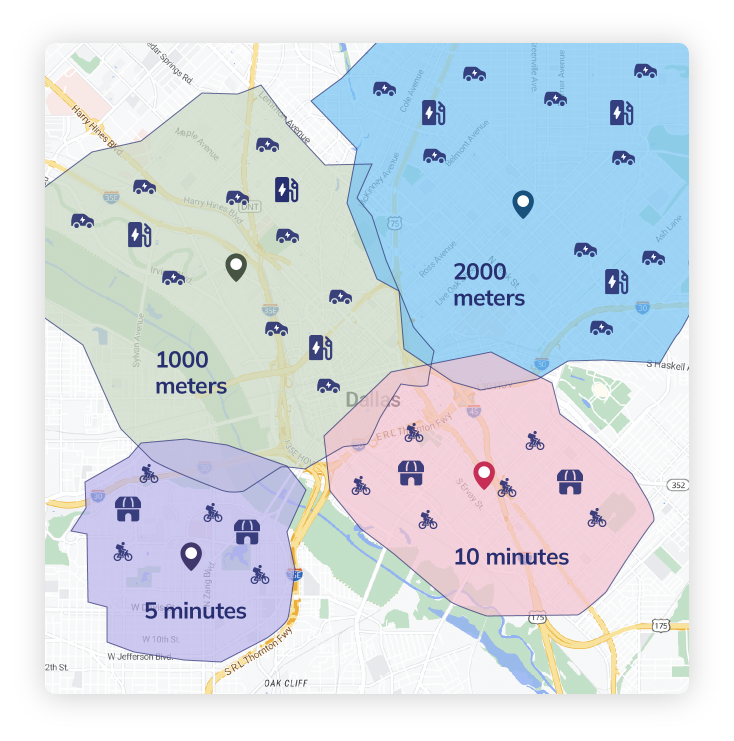

- BLOG
Geocoding vs Reverse Geocoding: Understanding the Core Differences & Best Use Cases
Published: July 30, 2025 | Updated: August 14, 2025
Route Optimization API
Optimize routing, task allocation and dispatch
Distance Matrix API
Calculate accurate ETAs, distances and directions
Directions API
Compute routes between two locations
Driver Assignment API
Assign the best driver for every order
Routing & Dispatch App
Plan optimized routes with 50+ Constraints
Product Demos
See NextBillion.ai APIs & SDKs In action
AI Route Optimization
Learns from Your Fleet’s Past Performance
Platform Overview
Learn about how Nextbillion.ai's platform is designed
Road Editor App
Private Routing Preferences For Custom Routing
On-Premise Deployments
Take Full Control of Your Maps and Routing
Trucking
Get regulation-compliant truck routes
Fleet Management
Solve fleet tracking, routing and navigation
Middle Mile Delivery
Optimized supply chain routes
Construction
Routes for Construction Material Delivery
Oil & Gas
Safe & Compliant Routing
Food & Beverage
Plan deliveries of refrigerated goods with regular shipments
Table of Contents

The location intelligence market exceeded 17 billion USD in 2023 and expects growth of more than 15 percent every year through 2032. It shows how fundamental precise geospatial data has become to today’s business settings.
Each time a destination is needed for a map or an app requires a GPS coordinate, it all comes down to two core processes that support the business: geocoding vs reverse geocoding.
Choosing between geocoding and reverse geocoding is an important decision for a company that relies on location data. If the location data is wrong, then route planning fails, analytics go out of control, and the number of support requests shoots up.
In this guide, you’ll read a well-informed breakdown of how each process works. You’ll learn what sort of systems require each, how to benchmark APIs, and why service location data should be a key consideration in your product’s architecture.

To simply illustrate, geocoding is the process of converting addresses to coordinates. Solutions provided by companies to do this function are called geocoding solutions.
These solutions typically take an address and change it to a set of coordinates, as well as perform the reverse operation: take a set of coordinates and change them to an address or possible addresses. Location intelligence, the kind that comes from such conversions, is used by companies in many ways that are almost impossible to list completely.
In the early days, geocoding meant little more than looking up street names in a table and returning a best guess. Today’s geocoding APIs, however, are much more sophisticated. A modern geocoding solution parses complex user inputs, corrects common errors (including those from voice entry), and intelligently interprets address variations or misspellings. The process draws from extensive, proprietary databases of addresses, postal codes, and street networks, much of which is not openly published, even by leading providers.
Modern geocoding engines leverage these resources and advanced matching algorithms to deliver high-accuracy results for real-world applications, whether placing pins for route planning, powering logistics platforms, or supporting emergency response systems.
If you look inside any serious geocoding API, you will find a few key parts.
Let’s have a conversation about where businesses in the real world use geocoding every single day. Here are some of the absolute most critical geocoding use cases that count for today’s operations:
Different use cases require different levels of tolerance for error, which is exactly why accuracy in geocoding is critical to the success of operations. Each of these use cases demands a different tolerance for error, which is why geocoding accuracy matters so much for operational success.

If geocoding answers “where is this address on a map?”, reverse geocoding answers “what is the address or landmark at this set of coordinates?” When your system receives a GPS ping, perhaps from a driver, a delivery agent, a sensor, or a mobile phone, you use reverse geocoding to make sense of those numbers for both your backend and your users.
The procedure seeks a latitude and a longitude and then, instead of just giving the returned coordinates a little bit of context, looks up in its data the nearest, most reasonable address, company, or place name. The best APIs pretty much always deliver at this point. Instead of just a street, they can return well-structured full addresses; building names; intersections; or, at a stretch, the nearest recognized area.
Reverse geocoding can be a hard function to achieve in certain places, such as dense urban centers or rural areas without formal street names, where a single pin on a map might match several possible addresses. The best reverse geocoding APIs allow for a high degree of output customization, include lots of point-of-interest data, and allow a sense of the match quality to be shown so that the wrong information is not presented to the end user.
These are the essential building blocks every reverse geocoding system needs to turn coordinates into real-world addresses or place names:
Reverse geocoding is used across many industries and technologies that rely on turning GPS data into useful, readable information:
In every case above, the accuracy of reverse geocoding directly determines how trustworthy and actionable the resulting location data will be for both operations and end users.
Getting clear differences between geocoding and reverse geocoding helps you design better systems and workflows. Lots of platforms and dashboards try to use both but end up creating confused logic or unclear API boundaries that give rise to errors later.
And unclear logic is no help to the teams in logistics, mobility, fintech, retail, or asset management that are working with geospatial tech and trying to overcome the daily challenges they face. They need both forms of tech to do their jobs, and it’s vital that both forms of tech work smoothly together.
The most basic difference is the input and the output.
Geocoding takes as input a human-readable address or a place name and gives as output a precise set of geographic coordinates, usually a pair of points defined by a latitude and a longitude, that are in a form ready to be used in mapping, routing, or analytics.
The reverse geocoding function works in the opposite direction. It takes coordinates, most often straight from GPS, and returns a human-understandable address, place name, or location context that anyone in the real world can relate to.
Geocoding transforms a street address or place name into GPS coordinates that computers use to map locations, calculate distances, and run spatial analytics. For example, when a user enters “350 Fifth Avenue, New York, NY,” a geocoding system converts this into its precise latitude and longitude for use in navigation or mapping apps.
Reverse geocoding does the opposite. It takes GPS coordinates and translates them into a human-readable address or place name, making raw location data meaningful for end users. If your app receives coordinates like (40.748817, -73.985428), reverse geocoding returns the address “350 Fifth Avenue, New York, NY” so users can easily understand the location.
To get the best results from geocoding or reverse geocoding, one needs different types of data.
Strong, detailed, and regularly updated address lists are the base of geocoding. It has to make sense of street names, building numbers, postal codes, and regional quirks. If the data is old or not all there, you don’t get the address you need to do a task like make a delivery or show up for an appointment.
Deep databases are a must for reverse geocoding. This is because it must reverse the process of providing a location from an address by using not just the address, but also knowledge of places that are important (POIs) or sometimes only partly important (like roads) in helping to find a location. If your reverse geocoding API has a poor database of this kind, your app will have poor reverse geocoding too.
If you want to reduce customer complaints, reduce service failures, and support growth, you cannot cut corners on these datasets.
Choosing between a geocoding API and a reverse geocoding API, or using both, needs an understanding of your application’s needs at a very detailed level. No two companies have exactly the same rules about the acceptability of error, the freshness of data, or the speed of API responses.
Here is how techie types and businessfolk should make decisions about their options:
A package left at the wrong building, a driver missing at a new place, or an ambulance that can’t find you quickly, all of these problems are linked to our geocoding and reverse geocoding services and their weak accuracy levels.
To check if you need better services, do this simple test:
Do you send packages to places where the neighborhood sounds like the right place, but inaccurate and not exact delivery records make it hard to trust that they will be there on time? If so, you need a better geocoding service.
If your use case is not the same everywhere, choose a provider whose geocoding and reverse geocoding can adapt or at least show uncertainty in their responses. Both functions must support quality indicators and adaptability.
Think about where you work now and where you want to grow. Working at a global level is a great story to tell, but what really matters is the quality of the data in the specific places you serve.
If your business is based on the mapping of India, Southeast Asia, or Africa, don’t think that what works in North America is going to work the same way, with the same accuracy, in other places. Ask for live demos or proofs of concept in your countries of concern.
For broad, global coverage and the highest quality results, choose a geocoding API or reverse geocoding API that is proven in your geography and regularly updated. Both functions require excellent, localized datasets for accurate results.
As your business grows, the number of queries per day can jump from the hundreds to the millions, across your various workloads. You need APIs that can scale, keep low delays, and keep costs down.
Your supplier can manage big amounts at busy times, not just in theory but in real work. It’s not just speed; it’s also about bursts and the low response times that allow real-time decisions.
Use actual traffic to test your shortlists; fake that high load; and watch your API status pages closely. For high-scale applications, whether you are sending addresses (geocoding) or coordinates (reverse geocoding), both APIs must handle growth and spikes without impacting response time. If your application needs live mapping or dispatch, both geocoding and reverse geocoding must be fast and reliable.
Not even the best location search API can be counted as a real option if its cost structure is likely to crush your profits as you grow. Pay attention to these elements, and understand their impact on your business model:
Choose the API: geocoding, reverse geocoding, or both, that fits your pricing and integration needs. If your solution requires both address-to-coordinate and coordinate-to-address functions, look for a provider that offers both under a unified, scalable, and cost-effective pricing model.
An API that is adaptable and budget-friendly is more likely to let a business react quickly to market changes and open up new chances for both types of location finding.
Selecting the right partner for your geospatial data services can spare your team countless hours of lost sleep and frustration. Here is how NextBillion.ai solves the dual challenges of location intelligence conversion.
The geocoding API from NextBillion.ai is very good at returning accurate coordinates when given an address. And it works all the time, in every part of the world. This is very important because NextBillion.ai serves large-scale clients in sectors like e-commerce, for which high-speed, high-stakes performance is a must.
Using the reverse geocoding API from NextBillion.ai, you can change GPS coordinates into addresses and other information in a precise and dependable way. The API’s flexible output formats let you integrate the results into your applications easily.
Choosing NextBillion.ai for your geocoding and reverse geocoding solutions brings a number of real benefits:
For in-depth technical discussions, refer to NextBillion.ai’s Navigation SDK or their solutions for ride-hailing and route optimization.
It’s not just a technical detail that sets geocoding and reverse geocoding apart. Geocoding is what happens when your systems take user input and use it to power maps and analytics. Reverse geocoding happens when your teams and your customers work with spatial data that tells them what’s going on in the world.
NextBillion.ai offers a range of location intelligence solutions, deployed at enterprise scale and with the customer support and technical power to ensure real-world performance. For companies wanting to turn location data into business value, whether in delivery, logistics, fintech, or mobility, the right geocoding and reverse geocoding infrastructure is an investment in growth.
If you need a solution built for real business needs, check out NextBillion.ai’s geocoding API and reverse geocoding API. Unlock the full power of your location intelligence workflows and get ahead in the map-first era.
The main distinction that sets geocoding apart from reverse geocoding is their basic function. One is responsible for taking something that is not location-based and turning it into something that is. The other takes location-based data and turns it back into something useful that is not based on location.
Yes, many applications, including but not limited to asset tracking and ride-hailing, use both functions. For example, user input is taken and subjected to geocoding for routing, while live GPS data is reverse geocoded for reporting.
The main sectors that benefit are logistics, e-commerce, transportation, mobility, real estate, emergency services, and fintech.
Bhavisha Bhatia is a Computer Science graduate with a passion for writing technical blogs that make complex technical concepts engaging and easy to understand. She is intrigued by the technological developments shaping the course of the world and the beautiful nature around us.